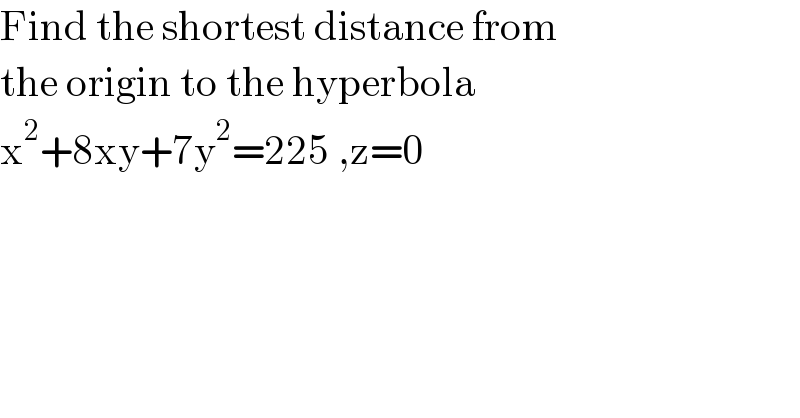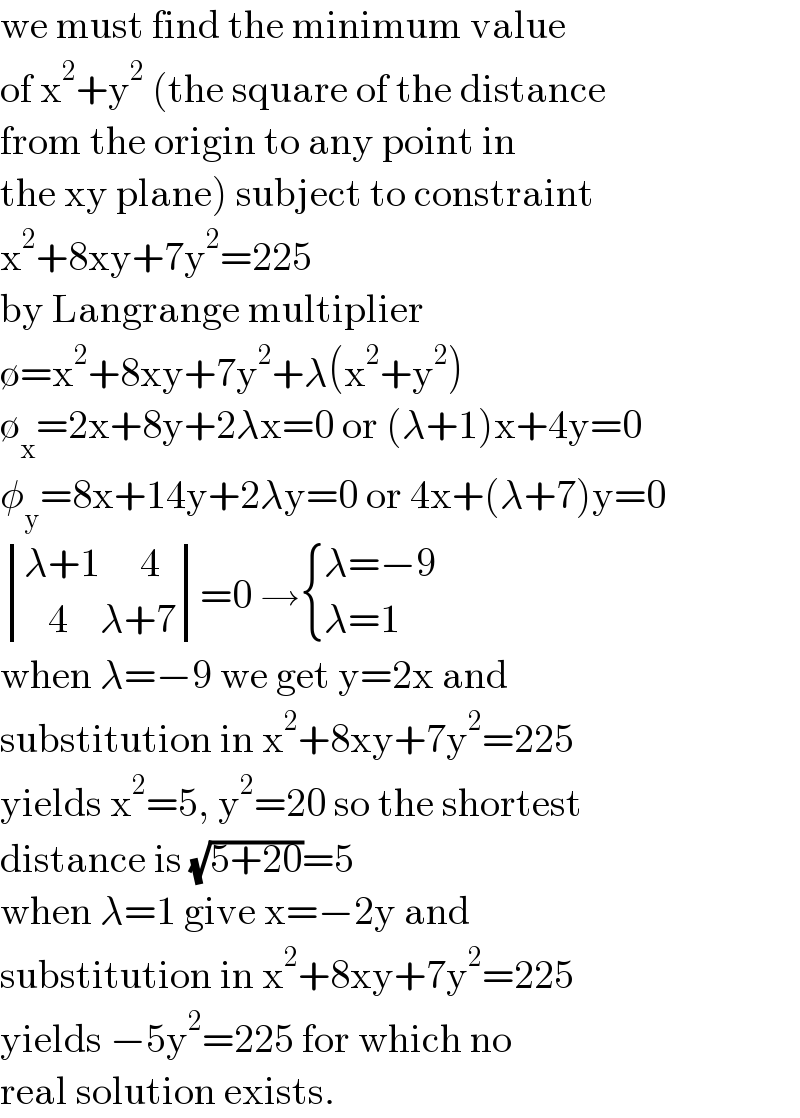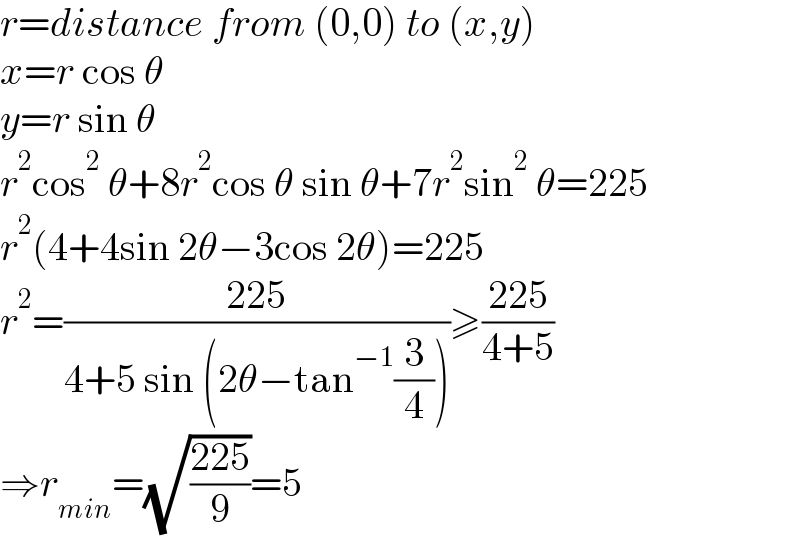
Question and Answers Forum
Question Number 144534 by imjagoll last updated on 26/Jun/21

Answered by liberty last updated on 26/Jun/21

Answered by mr W last updated on 26/Jun/21

| ||
Question and Answers Forum | ||
Question Number 144534 by imjagoll last updated on 26/Jun/21 | ||
 | ||
Answered by liberty last updated on 26/Jun/21 | ||
 | ||
| ||
Answered by mr W last updated on 26/Jun/21 | ||
 | ||
| ||